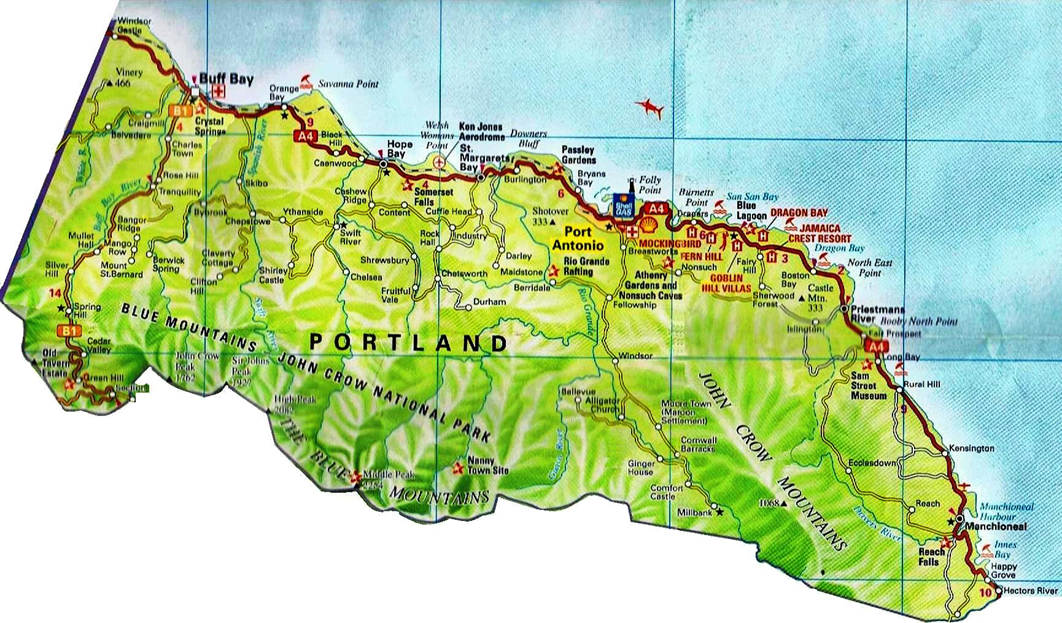


|
Professional Research & Maritime Historian, Author, & Conservator |

|
Jasper and Leigh Ashworth of Liverpool and Jamaica, page 2 |
|
Pirate Biographies– Ashworths of Liverpool and Jamaica p2 |



|
Webpage designed by Baylus C. Brooks—Copyright 2015-2017 Baylus C. Brooks All Rights Reserved |

|
Baylus’ Blog: |
|
Jasper Ashworth, Portland Parish, and the First Maroon War |



|
Portland formally became a parish in 1723 by order of the Duke of Portland, after whom it is named, and then Governor of Jamaica. The existing port was to be called Port Antonio and was slated to become a naval stronghold. To that end, by 1729, the British began to build Fort George on the peninsula separating the twin East and West harbors known as the Titchfield promontory. The fort was intended to protect settlers from attacks by the Spanish from the sea, and from the Maroons (run-away slaves) who lived in the mountains. |
|
By 1719, while Leigh sailed as a privateer against Spain, Jasper Ashworth was then living as a resident in St. George Parish, just north of Port Royal and Kingston Parishes. He deeded property in Port Royal for the synagogue there. A possible cousin from Rochdale, Lancaster, Abel (son of Abel; b.1694) remained in Port Royal with his common-law wife of mixed African and European descent, Mary Clarke. By 7 July 1731, Jasper and Susannah’s son, Sidney was born in Kingston Parish and Jasper had been appointed Commissary of the Stores for the new parish of Portland by Gov. Robert Hunter. In January 1734, he was a member of the Jamaican Assembly who argued against any gifts given to future governors of the island by residents. He and another son, John Hewett Ashworth (b. prob. bef. 1722 when Port Royal Parish began records), obtained patents in Portland Parish before 1735. Jasper took out 600 acres in Port Antonio or northeast side of the Rio Grande, owing no doubt to his official capacity within the parish and John Hewett Ashworth took out 70 acres adjacent to his father. In the late 1740s, John Hewett Ashworth had two children by his slave Bess: Francis and Elizabeth…
17 January 1748—Baptisms of Portland Parish
FIRST MAROON WAR: In November 1728, General Robert Hunter, the new govemor of Jamaica, wrote enthusiastically of plans for opening up the northern parts of the island, parts normally avoided because of hostile Maroons, a mix of older Spanish slave descendants, combined with runaway English slaves since the taking of Jamaica from the Spanish in 1655: Settlements at Port Antonio are going on with a good prospect… I am Convinced that Settlement there will very much add to the Strength and Security of that part of the Island, not only against a Foreign Enemy but also the Insults of the rebellious negroes [PRO; CO 137/53, no. 43]. Gov. Hunter’s report to the Board was not at all reassuring and Jamaican merchants in England feared the island may be lost to the Eastern Maroons, led by “Nanny.” The whole affair was an exercise in futility with a foreign governor used to New England mainland politics and not the island tropics. The threat was significant, for a report to the duke of Newcastle in July 1731 showed the population statistics drastically in favor of the Maroons: Whites, 7,648 to Blacks, 74,525, almost a 1:10 ratio. The areas inland of Port Antonio on the coast adjacent to the Rio Grande were not accessible as a result. Gov. Hunter originally appointed “Major” Jasper Ashworth as Commissary of the Stores—Ashworth would be forced to adapt, however. On 7 December 1731, Ashworth wrote to Hunter to inform him of the defeat of their forces "at or near the place and surpriz'd in the same manner[.] Soaper was in his first expedition, when Mackintosh's ear was cut off etc…. especially now the rebels are supply'd with arms and ammunition lost by this party. This misfortune has increas'd the fearfull apprehensions of the out settlements of St. George's and Portland.” Especially worrisome was the defection of their own slaves to the Maroons. Gov. Hunter wrote: "What gives me at present some solicitude is the desertion and backwardness of the baggage slaves, an account of which you'll find in Major Ashworth's last letters to me, there must be some immediate remedy for that evil.” Eventually, Hunter promoted Ashworth to Lt. Col. of the Militia to combat a superior encroaching enemy on Port Antonio in the face of desertions: The departure of their engineer, Col. Lilly from the field “… lays me under a necessity of sending such a commission to Major Ashworth, the Commissary and one of the chief Magestrates there, who, tho' but a Militia officer, will do the business as well and supply by diligence and zeal for the King's service what he wants in military experience.” By March 1733, Hunter relayed to the Assembly “There has been just now put into my hands a letter from Lieut. Col. Ashworth to a Member of your house, which I think necessary to be communicated to you, as it gives rather a sad prospect then any hopes of success four our partys” and “On the 15th by an express from Colo. Ashworth who commands at Port Antonio, I receiv'd an account of the defeat or rather the shamefull retreat of our partys etc.” Many assemblymen accused Ashworth of not performing his duty. Still, he had a 600-acre investment to look after. Still, by 1739, a treaty with the Eastern Maroons was signed and settlement proceeded nevertheless. These records show, if anything, the powerful agency of the Maroons of Jamaica. Jasper and Leigh Ashworth did not leave further record known on Jamaica. The only Ashworths remaining in Portland Parish are Elizabeth J. and Ann J. Ashworth, with a total of five slaves by March 1817. Genealogies in South Carolina show a John Ashworth, born about 1740 with a son named “Jasper.” It’s possible that their descendants perpetuated there and into North Carolina and Tennessee.
|
|
A RECORD OF THE JEWS IN JAMAICA By Jacob A. P. M. Andrade Published in Jamaica, 1941
APPENDIX "G" DEED OF CONVEYANCE Extract from the Deed of Conveyance for a Lot of Land at Port Royal Acquired for the Extension of the Synagogue Compound Ashworth, Jasper et ux to Quixano Abraham Mendez et al, Trustees. Dated 24th March, 1719. Extent of Land, 900 sq. ft. Purchase money, £70. Recorded at Liber 61, folio 157 of Deeds, and enrolled 29th June, 1720.
Jasper Ashworth of the parish of St. George (incorporated since 1867 in Portland) and Susannah [Hewett; prob. dau. of John and Mary Hewett of Port Royal Parish] his wife of the first part and Abraham Mendez Quixano of Port Royall, merchant, and Moses Lamego of the same Place, merchant, and Jacob Nunez of the same place, merchant, Wardens of the Synagogue or place of Worship belonging to the Jews upon Port Royal for themselves and the Wardens for the time being, and the hole people of the Jews inhabitants of Port Royall aforesaid of the other part: Habendum To Have and to Hold "All that part of parcel of land containing fifteen ffoot in front and sixtye ffoot in depth adjoining to the Synagogue of the Jews being part and parcel of "above-mentioned sixtye ffoot square of land . . ." |


